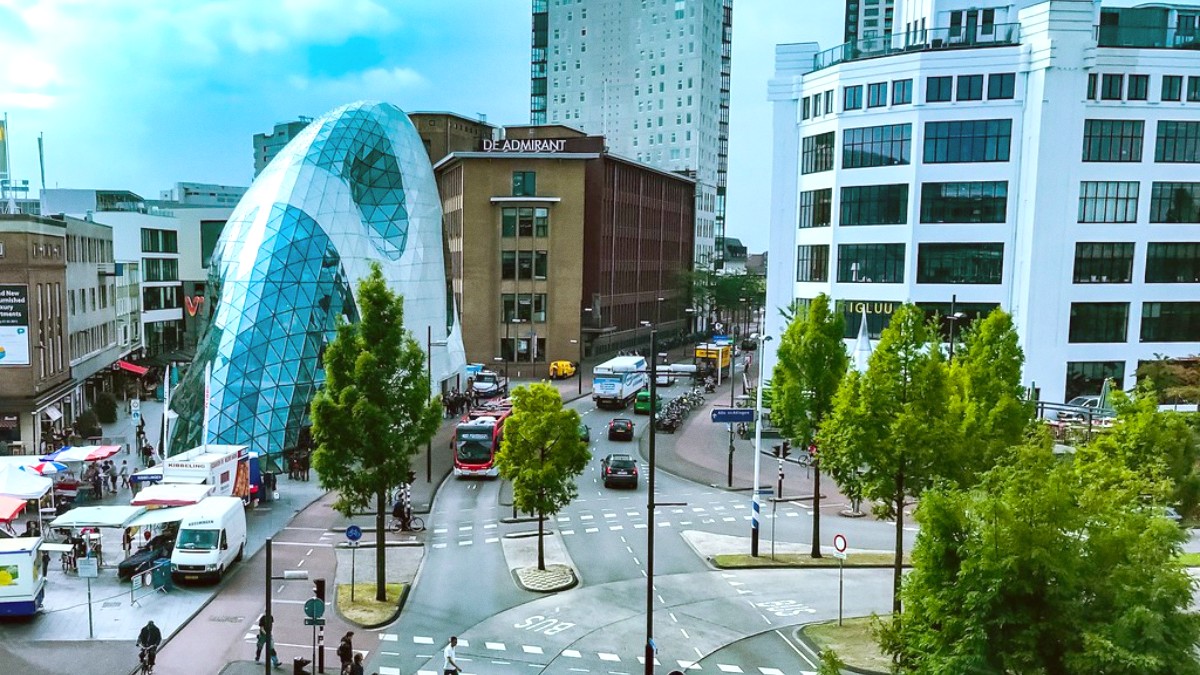
The Netherlands
Eindhoven does not boast postcard canals or ancient gabled houses, though it possesses its own form of beauty. Instead, it invites visitors to appreciate a different kind of Dutch charm: one built on ingenuity, resilience, and a forward-thinking mindset. This city presents a refreshing contrast to more traditional European destinations, giving a glimpse into the Netherlands' industrial heart and its vision for tomorrow. Expect a friendly atmosphere, accessible attractions, and a community proud of its heritage and excited about its future. This guide details practical advice for experiencing all Eindhoven offers.
Eindhoven sits in the southern Netherlands, within the province of North Brabant. This location places it approximately 120 kilometers (75 miles) south of Amsterdam, making it easily accessible from the nation's capital. Its position approximately 80 kilometers (50 miles) west of the German border also makes it a convenient stop for travelers exploring both the Netherlands and neighboring Germany. The city’s location in the southern part of the country features a slightly different cultural flavor than the northern Randstad area, with a reputation for a more relaxed, "Burgundian" lifestyle, which locals call "Brabantse gezelligheid." This means a greater emphasis on good food, drink, and community gatherings.
The Dommel River flows through Eindhoven, influencing the city’s layout and supplying green corridors and recreational spaces. The flat terrain surrounding Eindhoven is typical of the Netherlands, making cycling an ideal and pleasant way to get around both within the city and to nearby natural areas or villages. This geographical feature means hills are absent, permitting easy, leisurely rides for all skill levels.
Eindhoven obtained its city rights in 1232 from Duke Hendrik I of Brabant, beginning its journey as a small fortified settlement at the confluence of the Dommel and Gender rivers. For centuries, it remained a modest regional town, relying on agriculture and small-scale manufacturing. Its strategic location on trade routes held some importance, but it did not rival the larger, more powerful Dutch cities like Amsterdam or Utrecht for much of its early history. The city experienced periods of growth and decline, often shaped by regional conflicts and economic shifts common in the Low Countries. Remnants of its early past, though limited by later expansion and wartime damage, exist in its central layout and the presence of the Catharina Church.
The late 19th and early 20th centuries marked a turning point for Eindhoven, transforming it from a quiet provincial town into a burgeoning industrial powerhouse. This transformation links almost entirely to one name: Philips. Gerard and Anton Philips founded their light bulb factory in Eindhoven in 1891. This single enterprise became the driving force behind the city's modern identity and rapid expansion. Philips' growth was phenomenal. The company not only produced light bulbs but expanded into electronics, medical equipment, and consumer goods, becoming a global giant.
Built housing, schools, hospitals, and recreational facilities for employees.
Attracted workers, contributing to the city's multicultural character.
Influenced urban planning, with many original Philips buildings remaining.
Laid the groundwork for the city's future as a technology hub.
Continued expansion after significant WWII damage, cementing its modern path.
Today, Eindhoven finds recognition as a center for technology, design, and knowledge, often called the "Brainport" region. This designation reflects a highly collaborative ecosystem of knowledge institutions, research centers, and high-tech companies. The legacy of Philips, now headquartered in Amsterdam but with a strong presence in Eindhoven, continues through institutions like the Eindhoven University of Technology and Design Academy Eindhoven. These institutions educate future innovators and designers, guaranteeing a constant flow of new ideas and talent into the city. The Brainport region is a testament to Eindhoven's ability to adapt and redefine itself, moving from traditional manufacturing to high-tech research and creative industries. The city’s history is not just a collection of past events; it is a living narrative shaping its present and future.
A leading research university with a strong focus on engineering and design. It contributes significantly to the Brainport ecosystem, driving technological advancements.
An institution consistently producing world-renowned designers. Its influence extends to the city's design scene and annual Dutch Design Week.
Many parts of Eindhoven's history still exhibit themselves. Look for older industrial buildings now repurposed, especially in the Strijp-S area. These structures narrate a story of innovation and transformation.
Eindhoven, the fifth-largest city in the Netherlands by population, presents a distinct urban profile compared to its more famous Dutch counterparts. This snapshot provides a brief overview of what defines Eindhoven and what visitors may expect.
At its core, Eindhoven is a hub of innovation. It hosts the Eindhoven University of Technology (TU/e), a leading research university with a strong focus on engineering and design. Design Academy Eindhoven, another institution, consistently produces world-renowned designers. This academic foundation, combined with numerous high-tech companies, forms the backbone of the region known as "Brainport Eindhoven." This ecosystem drives advancements in technology, design, and manufacturing, drawing talent and investment from around the globe. Visitors notice this innovative spirit in the city's architecture, public art installations, and the general entrepreneurial buzz. It is a city that feels constantly in motion, developing new ideas and solutions.
Home to leading universities and high-tech companies, fostering an ecosystem of innovation.
A skyline of contemporary structures and transformed industrial sites like Strijp-S.
Stratumseind, the Netherlands' longest pub street, and other areas.
One of Eindhoven's most compelling features is its successful transformation of former industrial sites. Strijp-S, once the "Forbidden City" of Philips, where only employees could enter, now thrives as a creative and residential district. Here, old factory buildings, like the "Veemgebouw" and the "Klokgebouw," house design studios, independent boutiques, concept stores, restaurants, and cultural venues. This area retained its industrial character while evolving into a trendy, lively space. Strijp-R, another former Philips site, also undergoes a similar transformation, focusing on design and living.